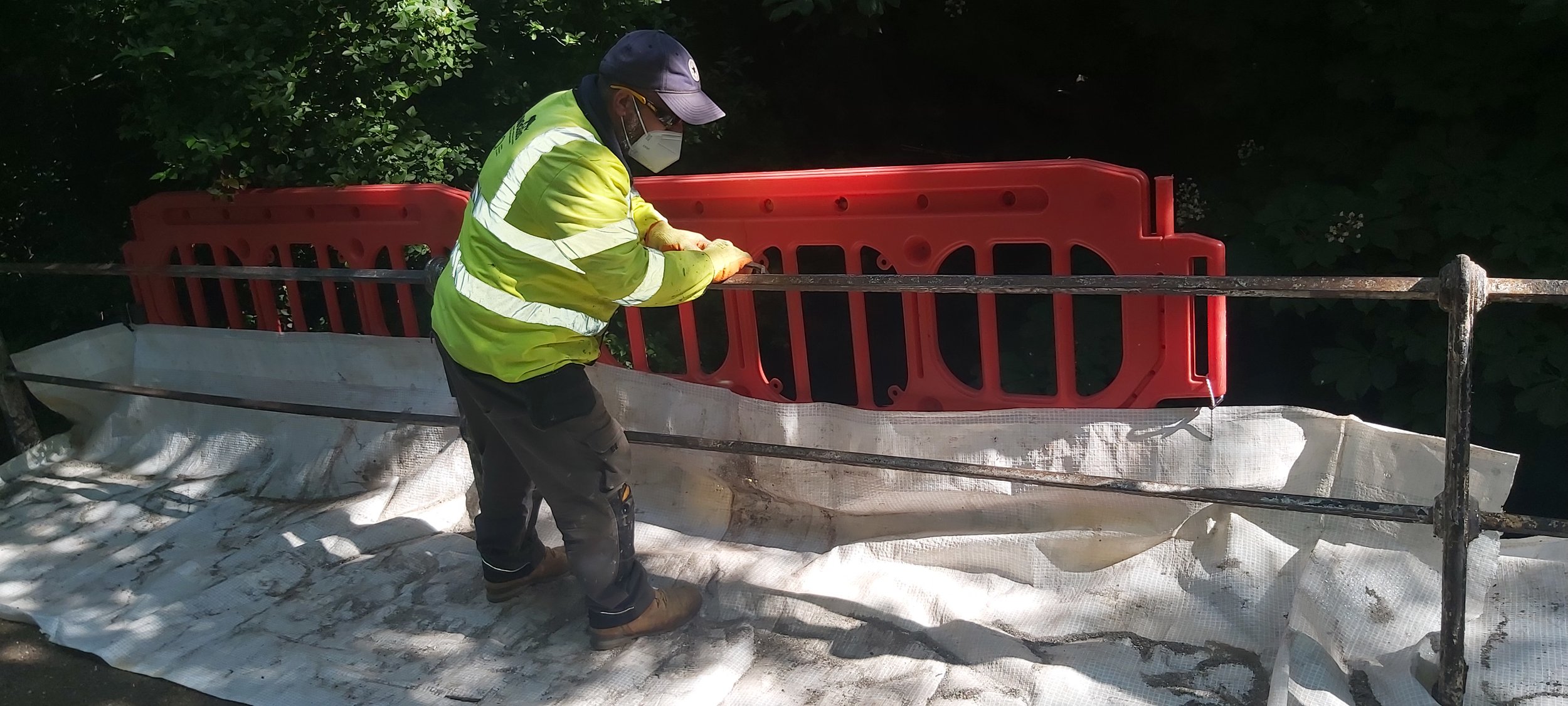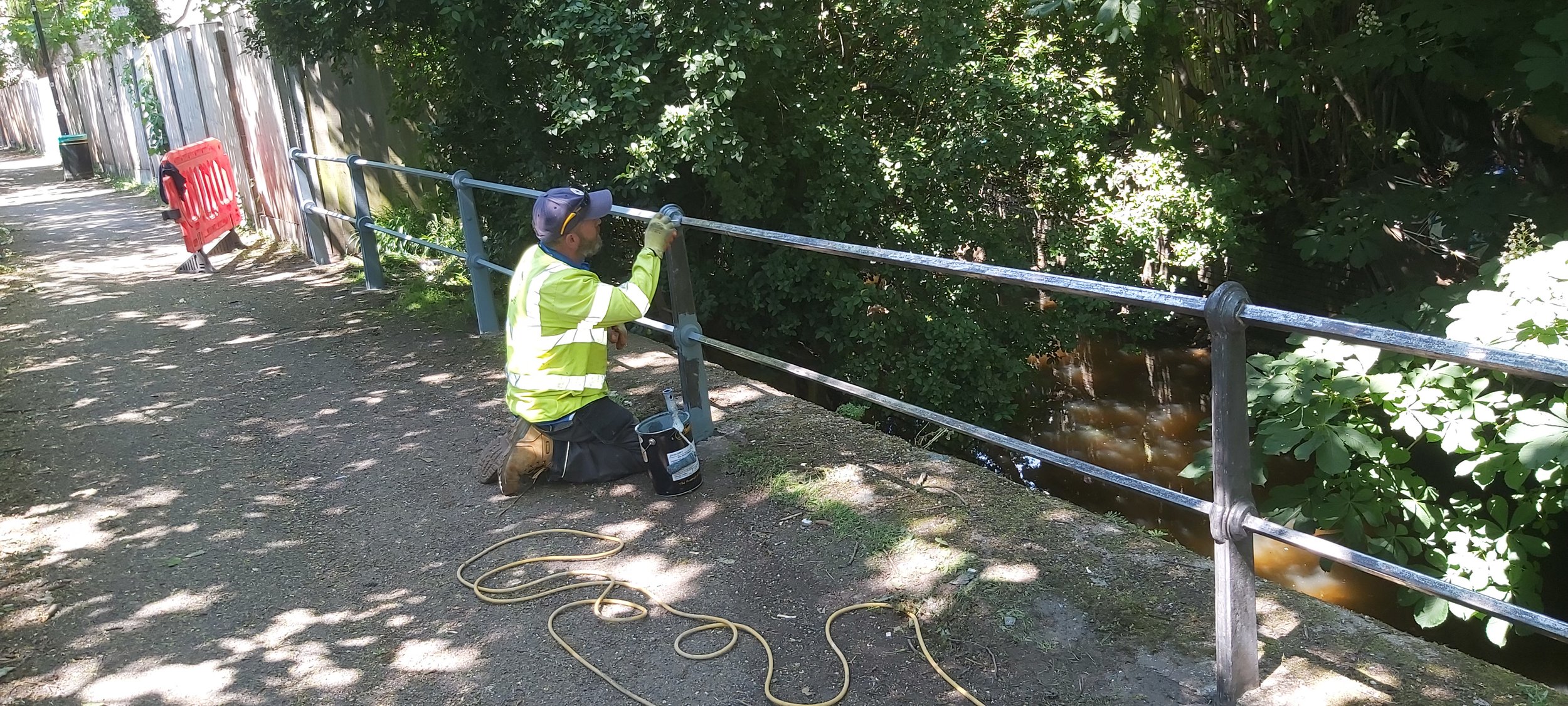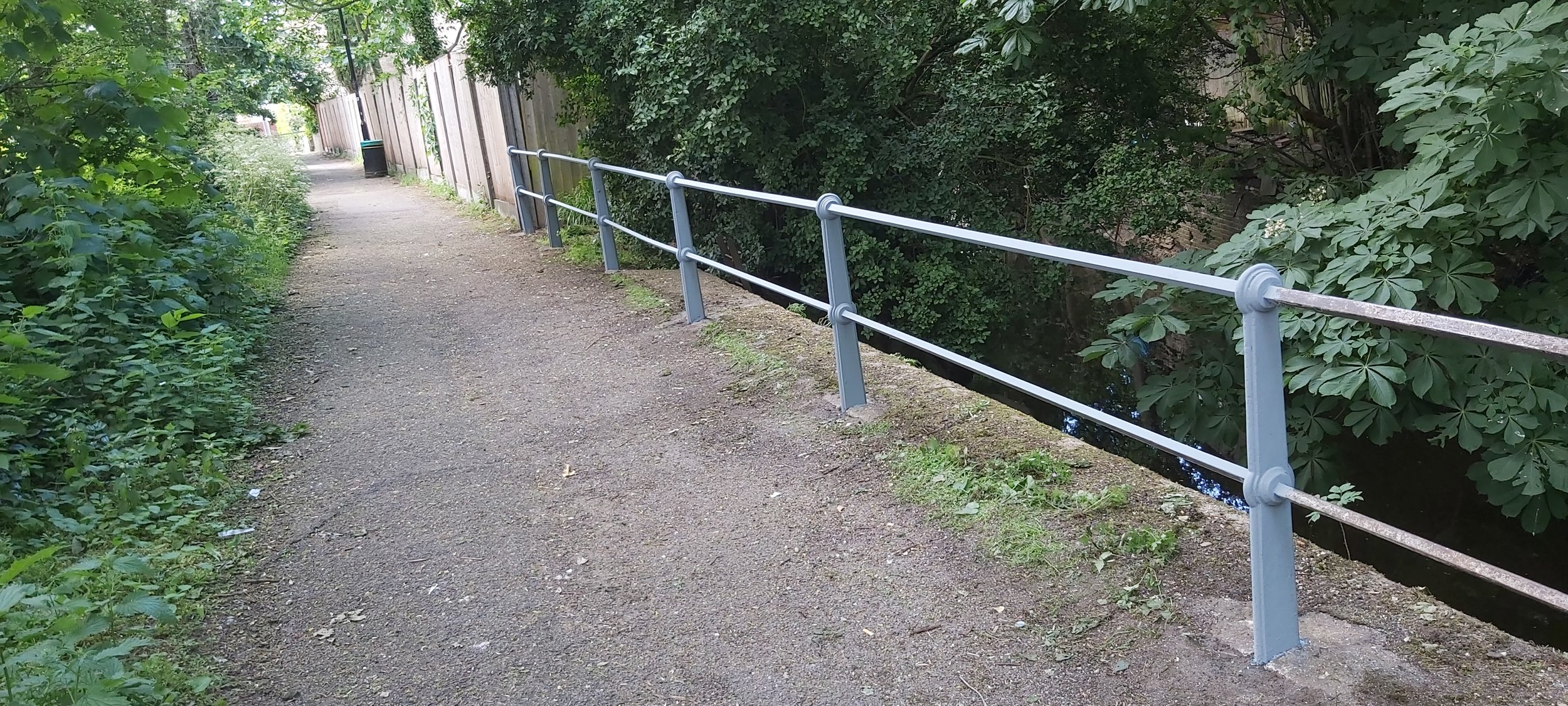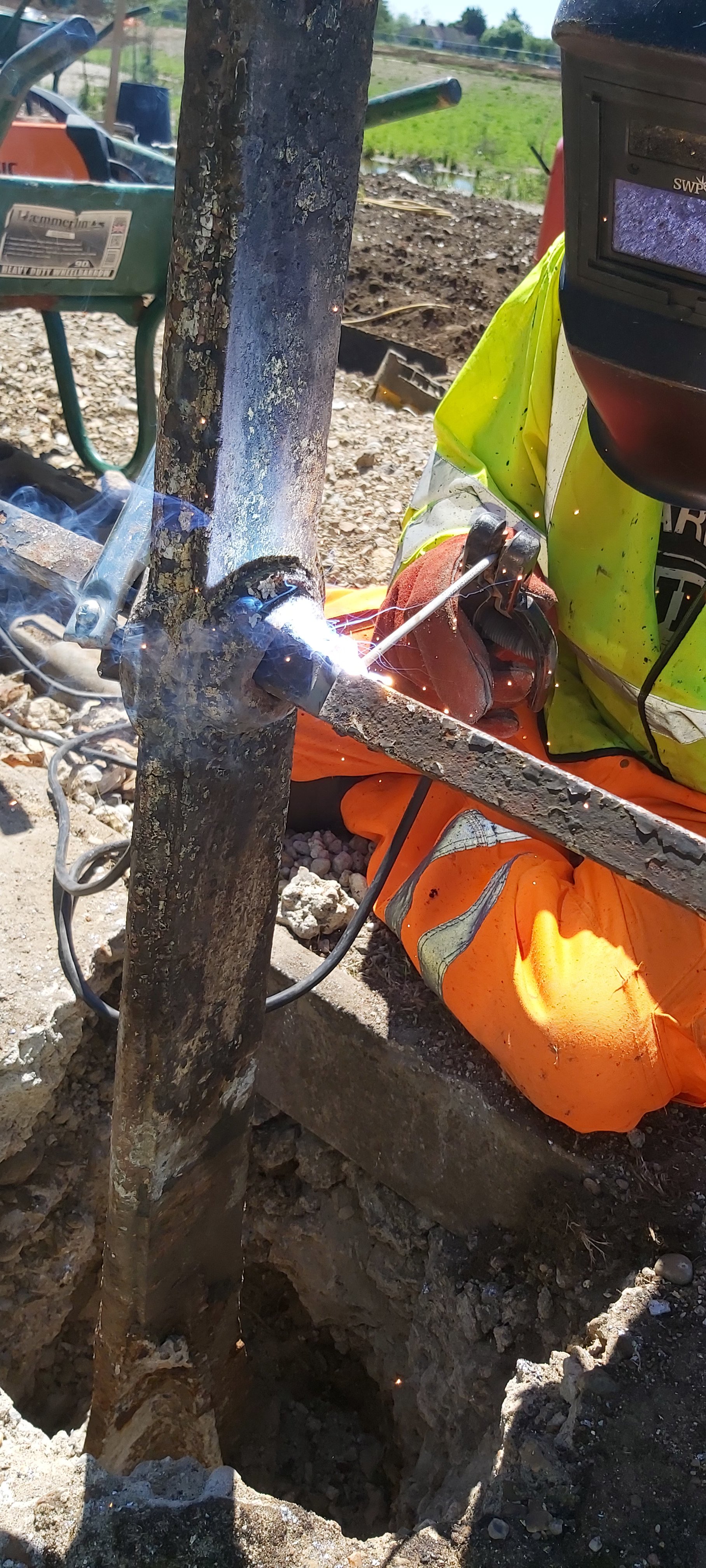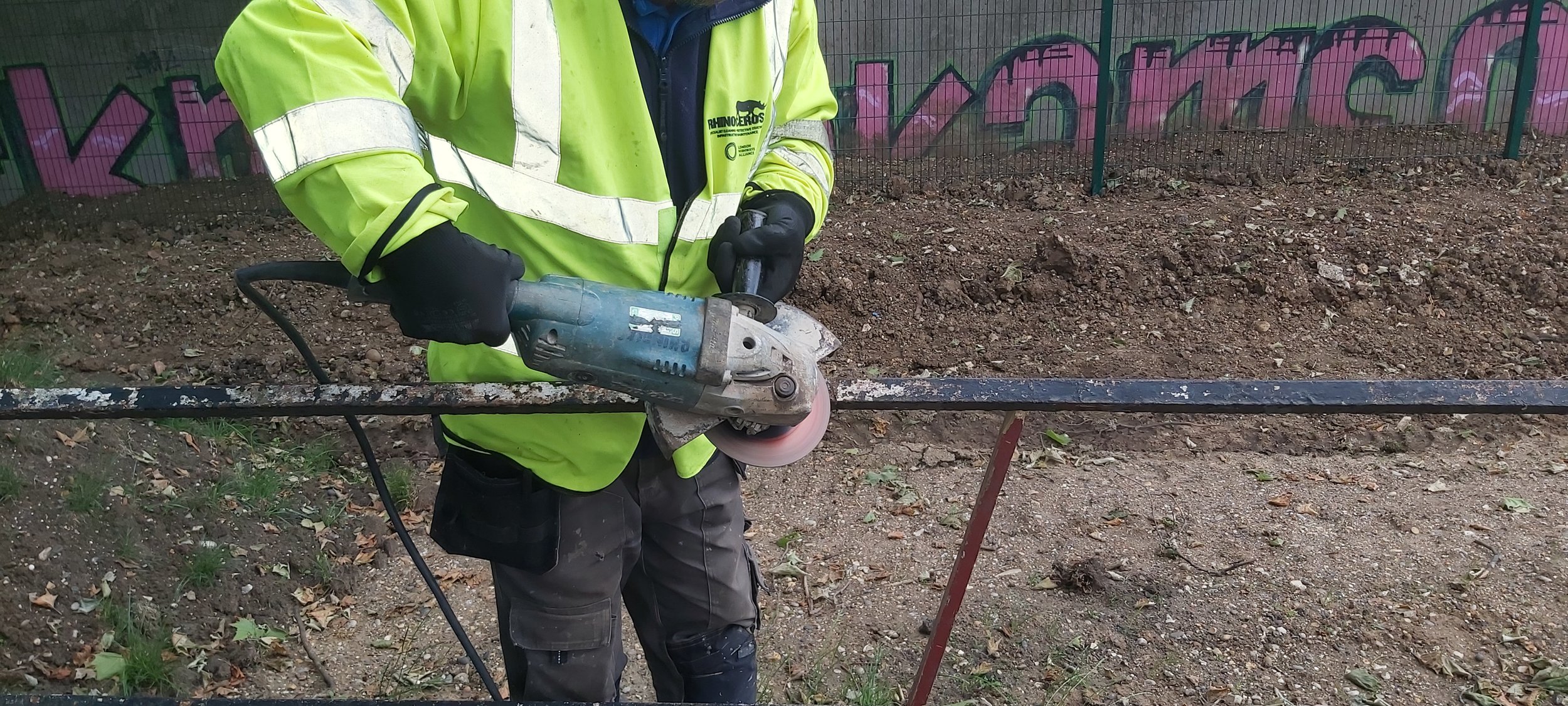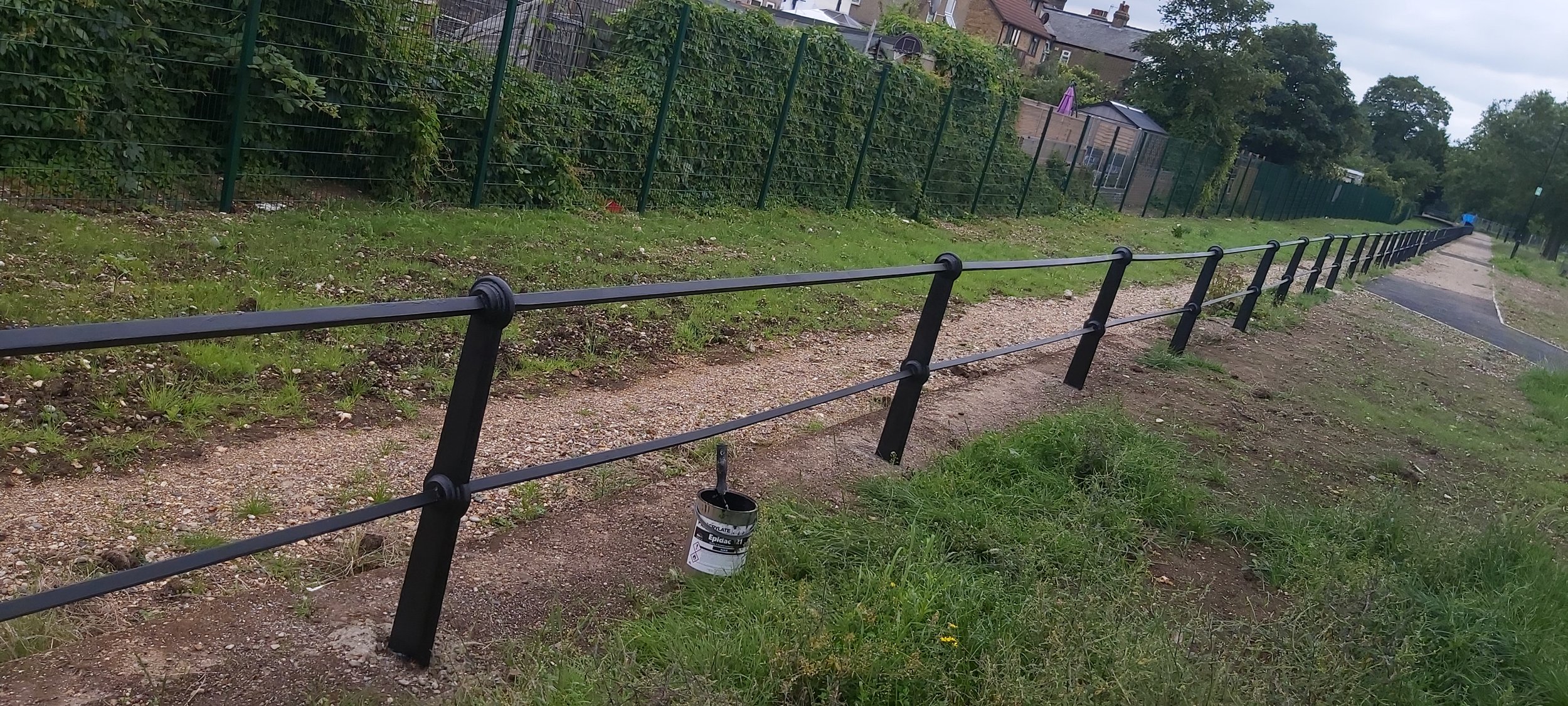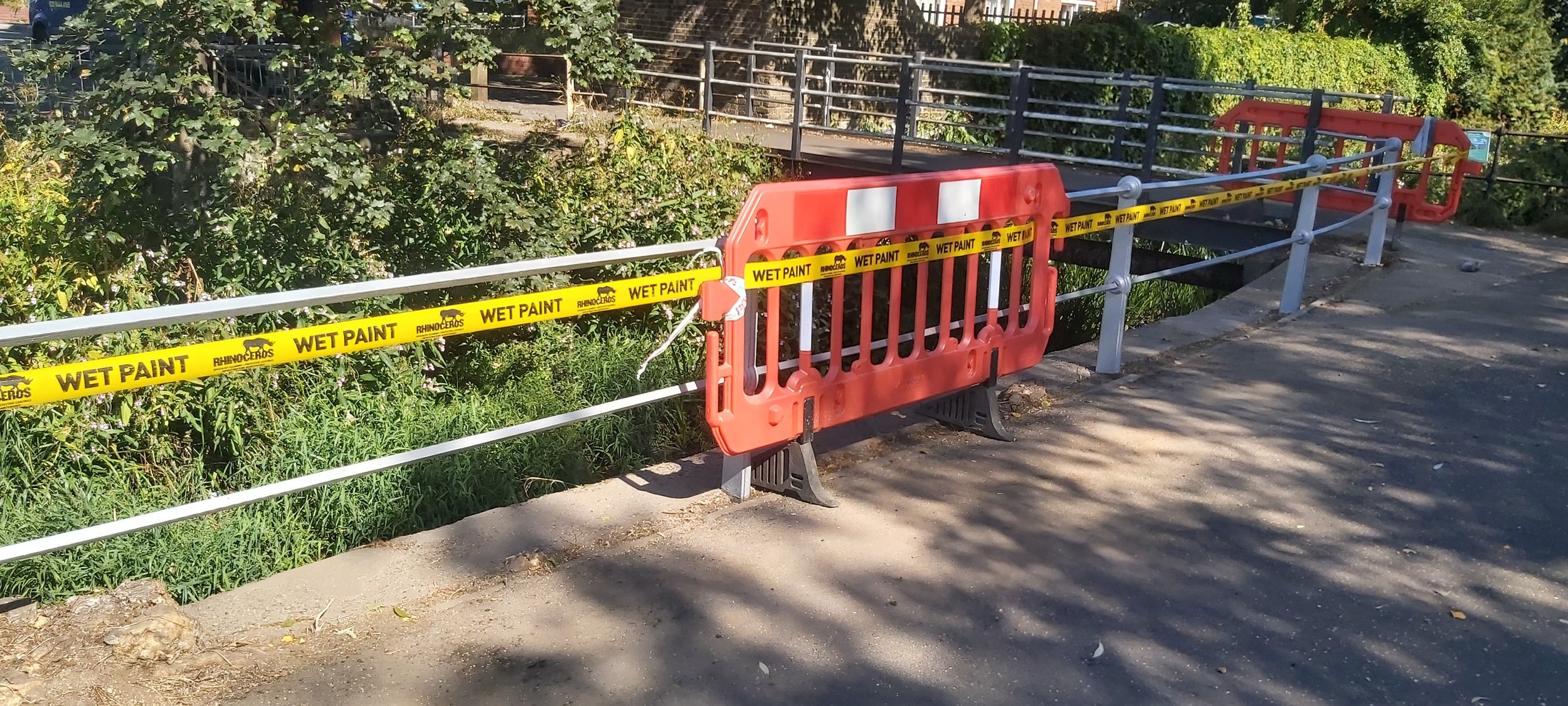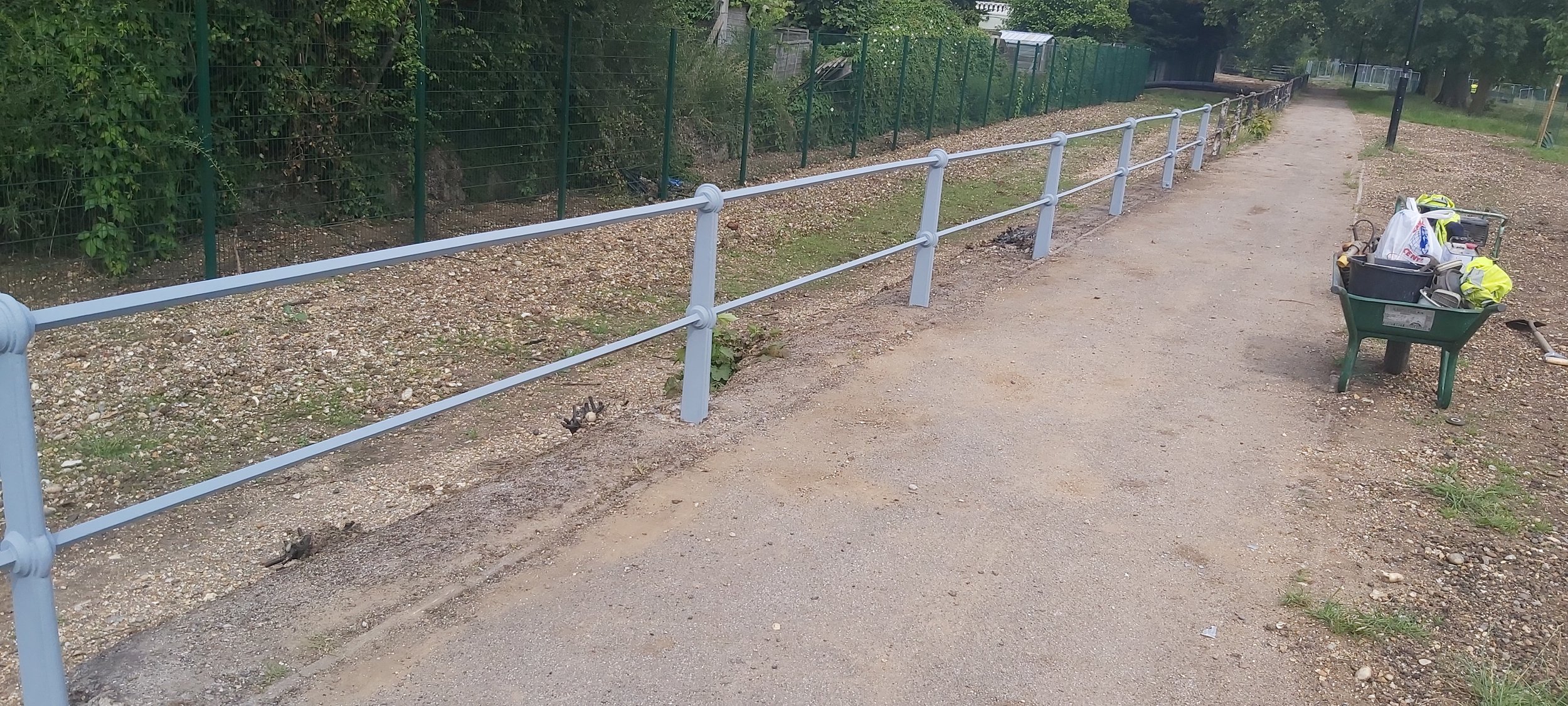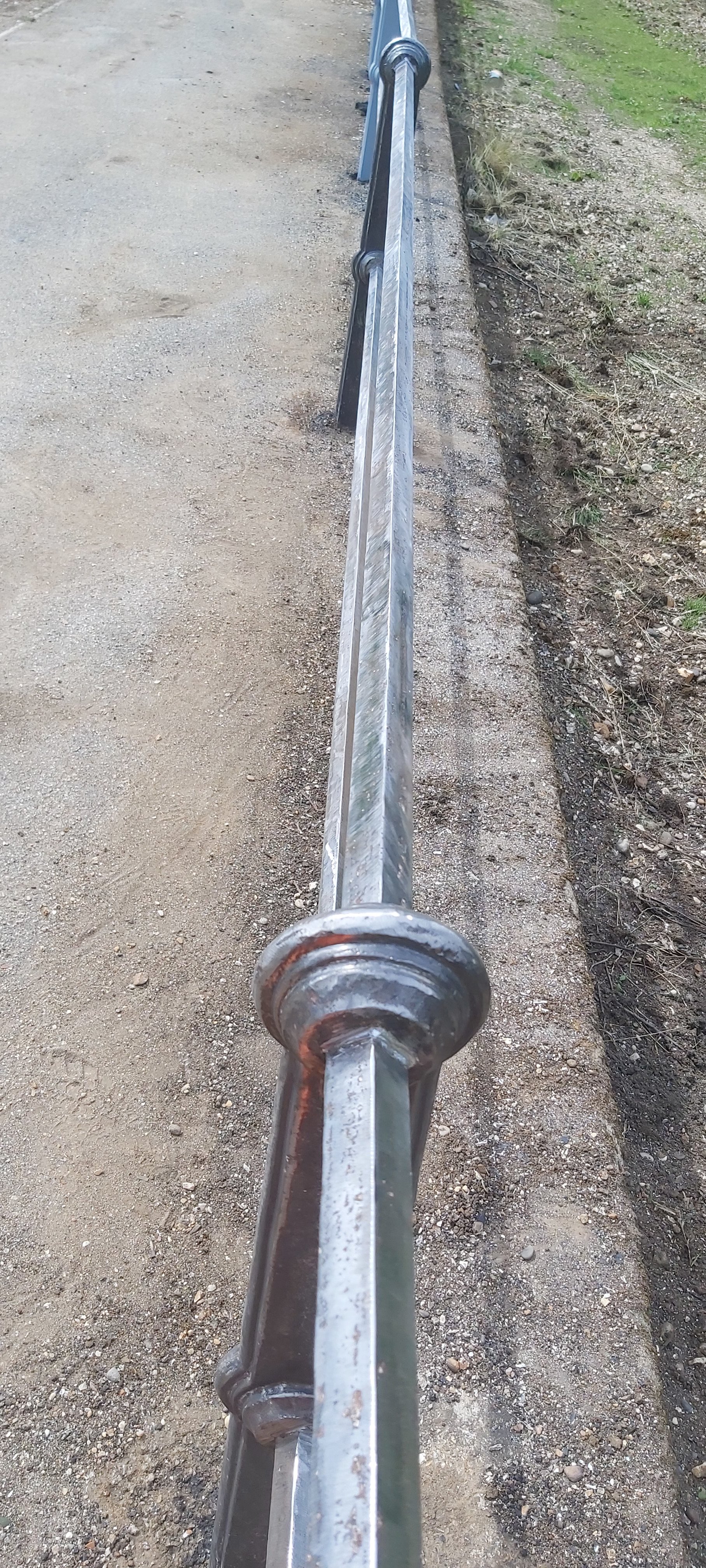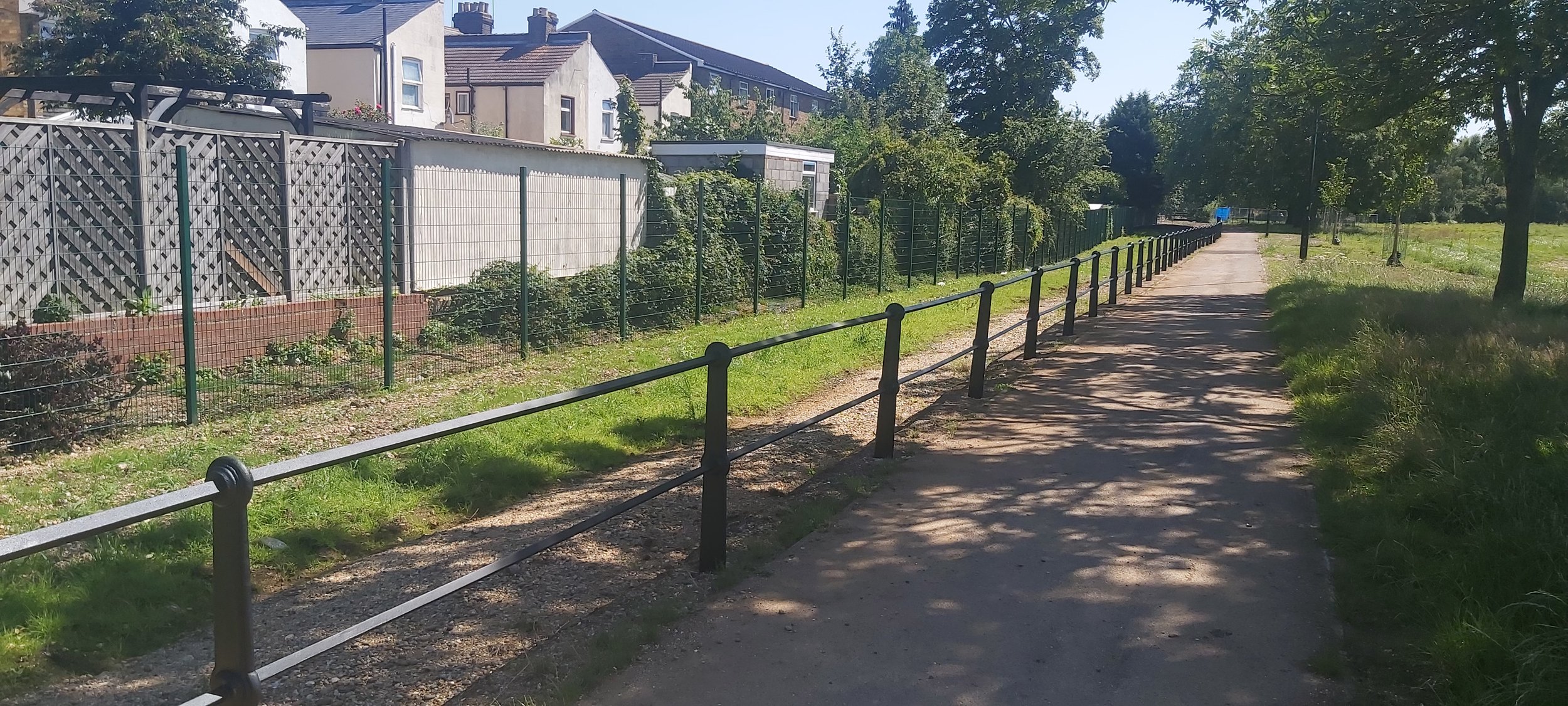Albany Park Fencing
Rhinoceros Ltd are working on the restoration of the 120 year old railings along Turkey Brook running through Albany Park.
On what had been College Farm, and allotments purchased by Enfield UDC and Trinity College Cambridge, the park was created circa 1902, probably so named to commemorate Prince Leopold, Duke of Albany, the youngest son of Queen Victoria.
Further additions of land were made to the park in 1921, 1926 and 1935 when it reached its current size, this last parcel of 4.75 acres procured by Enfield Borough Council with the help of a grant of £1,100 from the King Georges Fields Foundation. In World War 2, the railings on Bell Lane were removed for the war effort and the park was used for growing vegetables.
The Rhinoceros team have straightened damaged and bent bars and replaced broken or damaged sections using bar from adjacent sections of the fence no longer required.
All old paint has been removed from the remaining bars and the cast iron posts. Mechanical surface preparation to clean steel or iron has been followed with a zinc rich primer. This will be followed with an epoxy intermediate coat and a final coat of Thames Barrier Alkyd gloss in black.
The work is expected to be completed by the end of July to co-incide with the re-opening of the park following extensive landscaping and re-routing of the Turkey Brook.
Access & Directions:
Enfield Lock railway station is on the West Anglia Main Line, it is in Enfield Lock in the London Borough of Enfield, London. It is 11 miles 65 chains (19.0 km) down the line from London Liverpool Street and is situated between Brimsdown and Waltham Cross. Its three-letter station code is ENL and it is in Travelcard zone 6. The station and all trains serving it are operated by Greater Anglia.Enfield Lock was the main station for the Royal Small Arms Factory until its closure in the late 1980s, and now serves the large housing development on the site known as Enfield Island Village, as well as the nearby Innova Science and Business park.
History Notes:
Enfield Wash was where Elizabeth Canning (later married name Treat; 17 September 1734 – June 1773), an English maidservant claimed to have been kidnapped, held in a hayloft for almost a month and threatened with prostitution.
These events became one of the most celebrated English criminal mysteries of the 18th century, and a cause celebre at the time. Magistrate and author Henry Fielding was consulted on the matter. Mother Wells house was opposite the Sun and Woolpack public house, formerly the Sun and Punchbowl.
The United society, the first friendly society, began to meet in the Sun and Woolpack inn, Enfield Wash, in 1794. The road crosses Turkey Brook at the Woolpack Bridge, where there was a footbridge from the 17th century, but it was not until 1821 that a proper bridge for carts was provided by the Turnpike Trust that managed Enfield Highway. The road at Enfield Wash, and the settlement, was known as "Horsepoolstones" until the 18th century.
Turkey Brook was also known as Maiden Brook and sometimes Wash Brook.According to legend, Bell Lane is haunted by a phantom coach. It is reputed to appear on moonless nights before Christmas, and to travel several feet above the rThe London Outer Orbital Path (Section 17) follows the course of Turkey Brook which flows west–east through the park.


